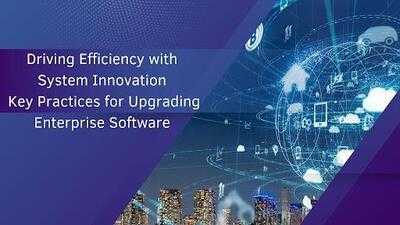

In a rapidly evolving digital landscape, modern enterprise systems have transformed into essential tools for , security, and operational performance. Mohammed Abid Momin's recent analysis provides a comprehensive guide to navigating these upgrades with precision and success. By focusing on technological innovations and strategic methodologies, his insights highlight how businesses can effectively harness advancements in enterprise resource planning to achieve seamless integration and sustained growth.
Building the Foundation: Strategic Pre-Upgrade Planning
Upgrading a system begins well before the first line of code is adjusted. Success lies in meticulous pre-upgrade planning, encompassing technical and strategic dimensions. Organizations achieve greater efficiency when they assess their needs in alignment with long-term goals. Strategic scoping, combined with technical and business expertise, ensures that every affected process and system is accounted for.
Technical assessments leverage cutting-edge methodologies like artificial intelligence-powered simulations to predict upgrade challenges and optimize resource allocation. By incorporating data-driven insights, businesses minimize disruptions and ensure seamless transitions.
Automation and Backup: Securing Data Integrity
Data preservation stands at the heart of any successful upgrade. Implementing robust system backup protocols significantly mitigates risk, allowing organizations to recover rapidly in unforeseen circumstances. Innovations like incremental backup techniques and automated mapping tools enhance accuracy and reduce downtime.
These automated solutions extend to testing frameworks that ensure system readiness before deployment. With environments replicating production systems at near-perfect accuracy, businesses can detect potential issues early and refine their strategies accordingly.
The Execution Stage: Harnessing Advanced Tools
The upgrade execution phase is where innovation meets precision. Automated tools streamline processes, handling massive volumes of data and system objects with remarkable speed and reliability. Real-time monitoring systems track performance metrics, providing insights into operational health.
Machine learning capabilities further enhance execution by predicting potential bottlenecks. Intelligent sequencing algorithms optimize transport orders, ensuring smooth transitions and minimal manual intervention. These advancements underscore the importance of integrating predictive tools for sustainable success.
Post-Upgrade Optimization: A Continuous Commitment
Achieving stability post-upgrade requires systematic validation and ongoing optimization. Organizations increasingly rely on AI-driven test frameworks prioritizing critical functions, reducing validation timelines while maintaining accuracy. Real-time monitoring enables teams to swiftly address anomalies, maintaining sub-second response times for most operations.
Performance benchmarks serve as a reference for continuous improvement. Advanced diagnostic tools analyze system behavior, helping organizations identify opportunities for enhancements. These methodologies ensure immediate operational stability and establish a foundation for long-term growth.
Innovating Maintenance for Sustainable Performance
Modern maintenance strategies have evolved significantly, focusing on predictive capabilities that enable businesses to address potential issues before they occur, rather than reacting after the fact. Organizations can identify early warning signs of system anomalies by leveraging advanced tools to analyze patterns across thousands of transactions. This proactive approach minimizes system failures and optimizes overall performance, ensuring seamless operations.
In addition to predictive tools, comprehensive training programs play a crucial role in the success of these strategies. These programs are designed to equip teams with the knowledge and skills required to navigate new systems and updates effectively. Organizations enhance their ability to innovate and respond to evolving demands by fostering a culture of adaptability and continuous learning. Predictive maintenance and robust training empower businesses to maintain stability and drive long-term success.
In conclusion, Mohammed Abid Momin emphasizes that the evolution of enterprise systems marks a new era of operational excellence driven by advancements in automation, artificial intelligence, and predictive maintenance. His analysis underscores the importance of adopting structured methodologies and leveraging emerging technologies to achieve significant transformations. As businesses face the challenges of digital transformation, these innovations provide a robust framework for improving efficiency, ensuring sustainability, and maintaining a competitive edge in an ever-changing global market.